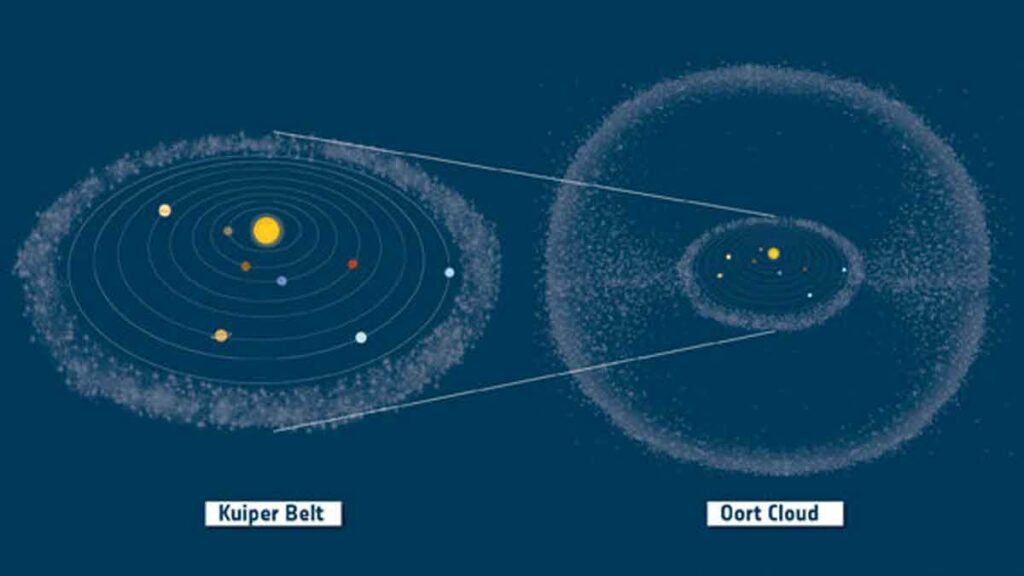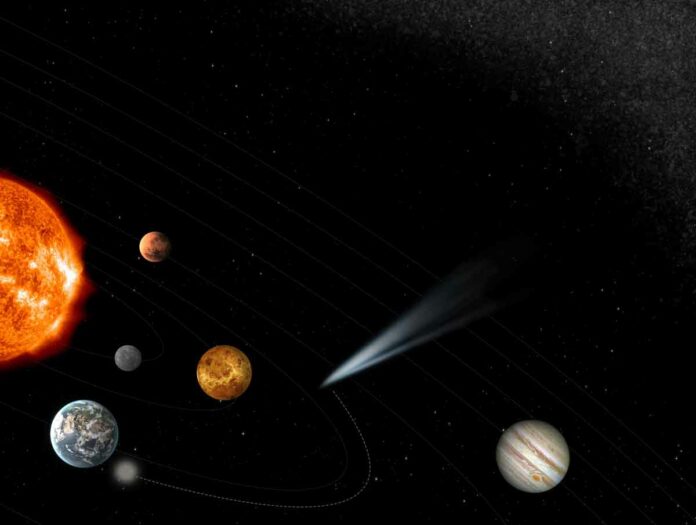ESA and OHB have agreed to proceed with the design and construction of ESA’s ambitious Comet Interceptor spacecraft. This spacecraft is scheduled to launch in 2029.
But the target of Comet Interceptor has yet to be discovered. Because it would take too long to develop a mission based on the short timeframe of a potential target entering the solar system for a spacecraft to arrive in time.
Comet Interceptor will be ready and waiting 1.5 million kilometres “behind” Earth as seen from the sun for a suitable comet or even an interstellar object to enter the inner solar system for the first time.
Comet Interceptor will be launched from its parking orbit to intersect the trajectory of a suitable comet or interstellar object. The mission is divided into three modules. The modules are the main spacecraft and two probes. They will split up several days before intercepting the comet in order to perform simultaneous observations from multiple angles. It will result in an exceptional 3D profile of the comet or interstellar object.

ESA is in charge of the main spacecraft as well as one of the probes. This probe will carry different but complementary instruments built by European scientific institutes and industry. The other probe and its instruments are provided by JAXA, the Japan Aerospace Exploration Agency.
On December 15, ESA and OHB celebrated the contract signing with a small ceremony at ESA Headquarters in Paris.
Comet Interceptor was proposed to the European Space Agency in July 2018 and selected in June 2019. It exemplifies a “rapid” development or F-class mission. Comet Interceptor is scheduled to launch in 2029 as a co-passenger with the ESA’s exoplanet-studying Ariel spacecraft.

